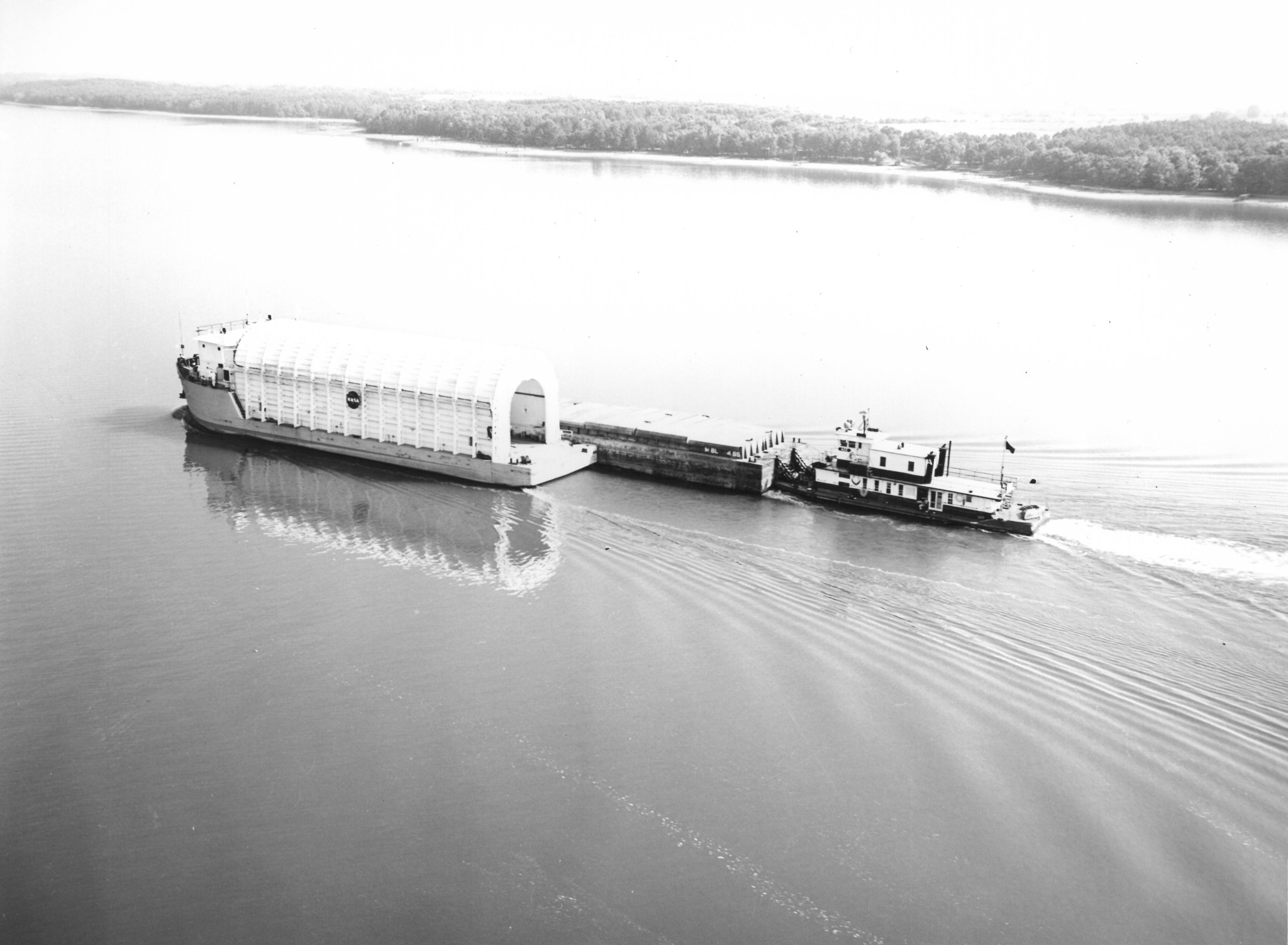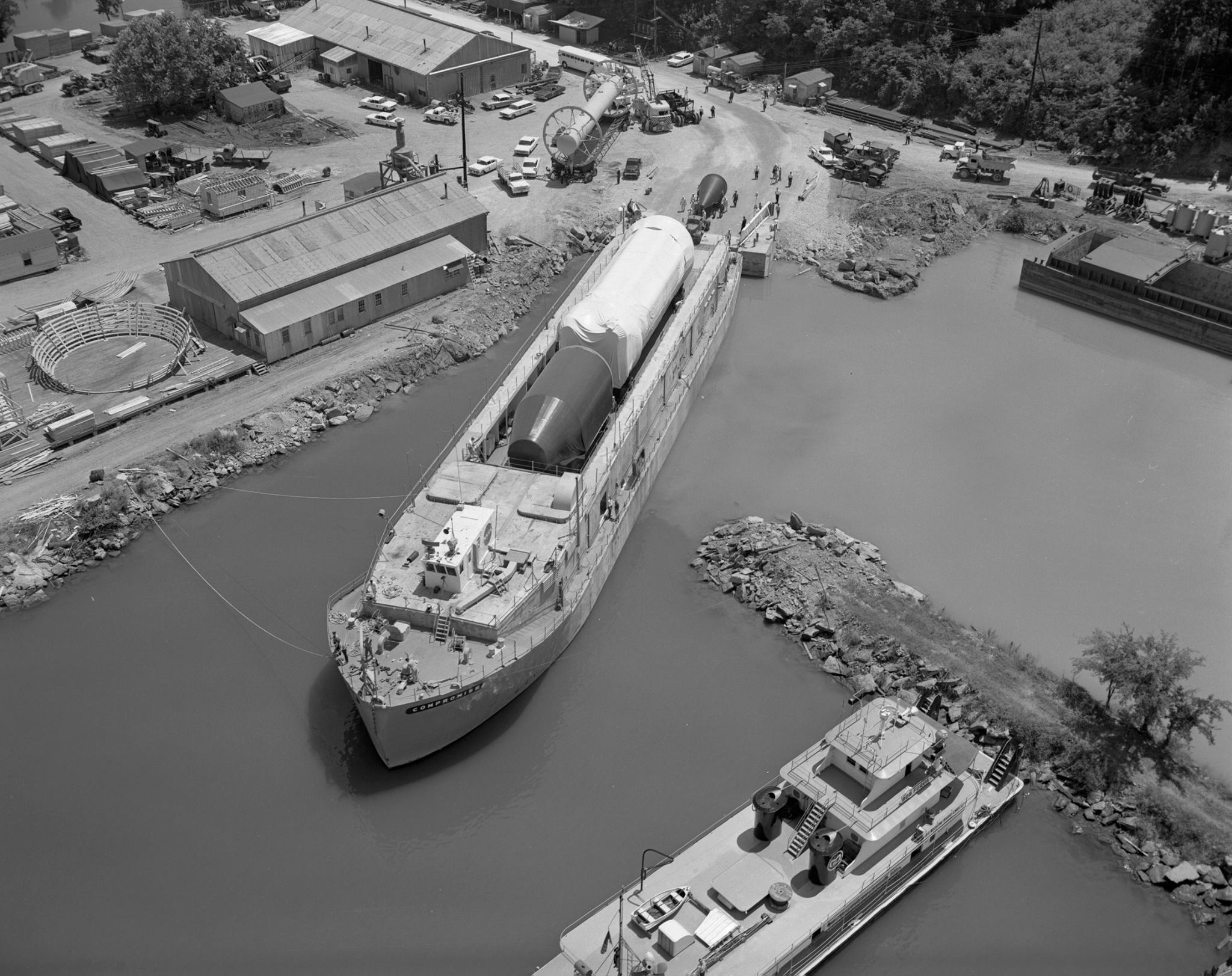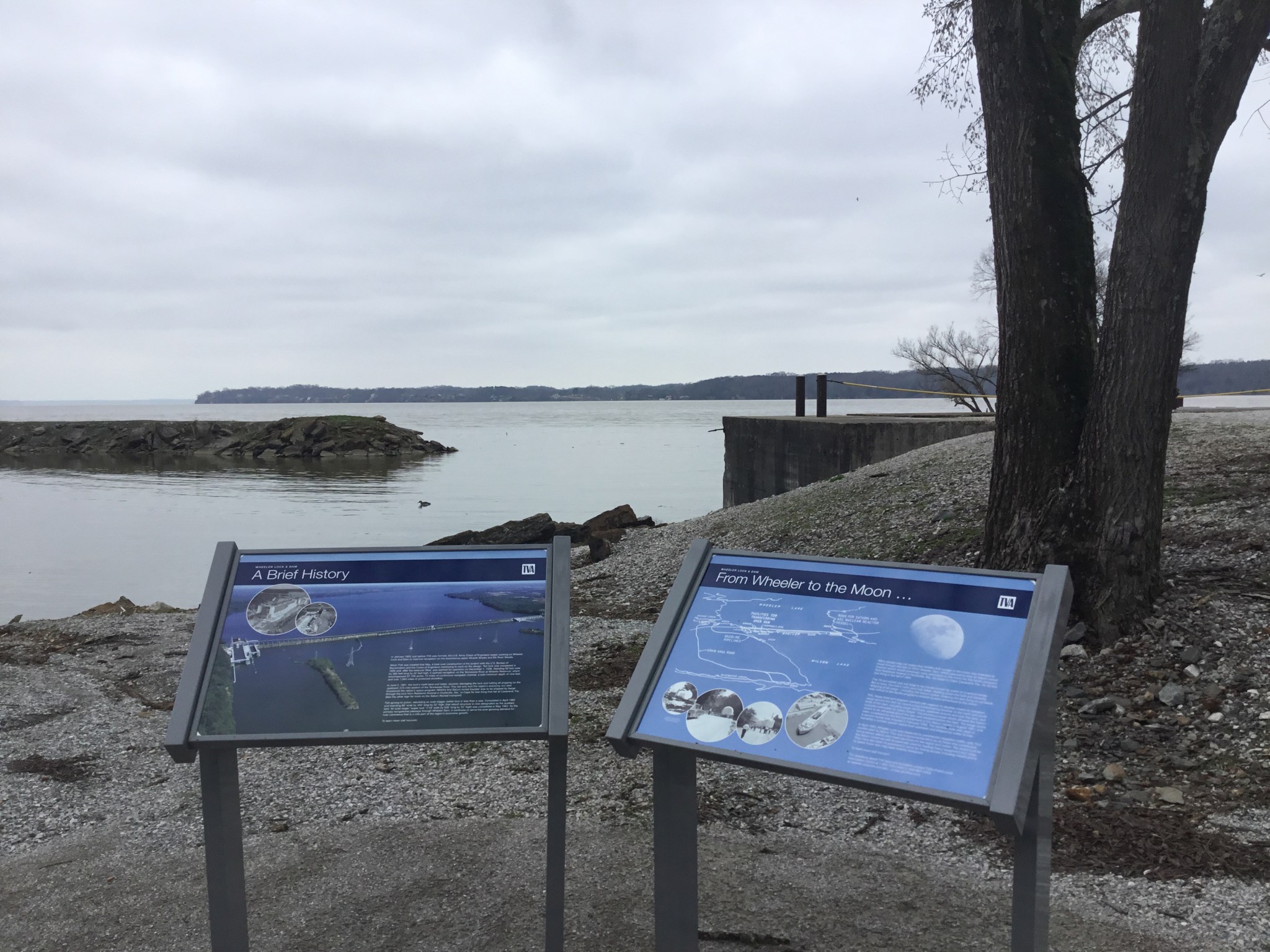Wheelin’ Around Wheeler Dam: Transporting the Saturn I

Many cruises down the Tennessee River are peaceful and relaxing as the warm air and croaking frogs melt cares away. The cruise on NASA’s barge called Palaemon on Aug. 5, 1961, was not one of them. Up against the clock to get critical flight hardware to Cape Canaveral, Florida, to keep alive the goal of landing man on the Moon by the end of the decade, a failure at the Wheeler Dam in North Alabama presented a challenge that had to be overcome.

Palaemon carried the first flight stage of a Saturn I rocket and test flight versions of the rocket’s upper stage and payload from NASA’s Marshall Space Flight Center in Huntsville, Alabama, to Cape Canaveral where they were to be assembled and launched. Just 40 miles into the 2,000-mile journey, the barge, its payload and its crew, reached Wheeler Dam where two months prior on June 2, the dam’s lone lock — essentially a doorway in the dam for boats — collapsed. The doorway was closed.

The high priority of the Saturn program — along with the importance of the cargo transportation and operations of the Atomic Energy Commission in Oak Ridge, Tennessee — prompted quick action. The Tennessee Valley Authority, the federal agency that manages Wheeler Dam, quickly had roads built around the dam, connecting upstream and downstream sections of the river.
While one problem was solved, one was not. The journey from Marshall to Cape Canaveral essentially became two voyages, needing two barges. NASA needed another barge. In its excessed fleet in Pensacola, Florida, the U.S. Navy had a barge used in World War II that would do the job. Teams from Marshall acquired the ship — christened Compromise — and quickly began modifying it to transport the rocket segments.
On Aug. 5, hours after leaving the docks at Marshall, Palaemon approached the damaged lock, and teams were ready. NASA crews unloaded the flight hardware from Palaemon upstream of the dam near Town Creek, Alabama, and transported it downstream on the new roads cut through the North Alabama forest. On the downstream side of the dam, Compromise received the cargo and continued the journey.
The 10-day voyage took Compromise to the open, blue waters of the Gulf of Mexico by way of the Tennessee, Ohio and Mississippi rivers. The barge, its cargo and its crew crossed the Gulf of Mexico, rounded the southern tip of Florida and traveled north along the Atlantic coast of Florida to the Saturn dock at Cape Canaveral.
Awaiting the arrival of the Saturn I hardware were teams from Marshall, who on Aug. 15, unloaded the ship and began assembling the first Saturn vehicle for launch. On Oct. 27, the Saturn I rocket — mission designation SA-1 — leapt off of its launch pedestal on a column of flame. The research and development flight tested the Saturn I’s first stage propulsion and verified the rocket’s structure and aerodynamics properties.
While the rocket climbed to its peak altitude of nearly 85 miles, engineers and leaders at Cape Canaveral and at Marshall — including Marshall Center Director Wernher von Braun — carefully watched the launch and continual stream of data. When all was said and done, the mission was a success. The first stage of the Saturn I worked, and the rocket’s aerodynamic and structural properties were verified. The nation’s goal of reaching the Moon was still alive.
That dream was realized less than eight years later as Neil Armstrong and Edwin “Buzz” Aldrin landed at the Sea of Tranquility on the Moon. In the nearly six decades since, many voyages have been made down the Tennessee River, but on Aug. 5, 1961, under tight deadlines to get to the launch pad, teams were forced to take an unconventional route to help put humanity where it had never been before.
To read more about Marshall’s history, visit:

























